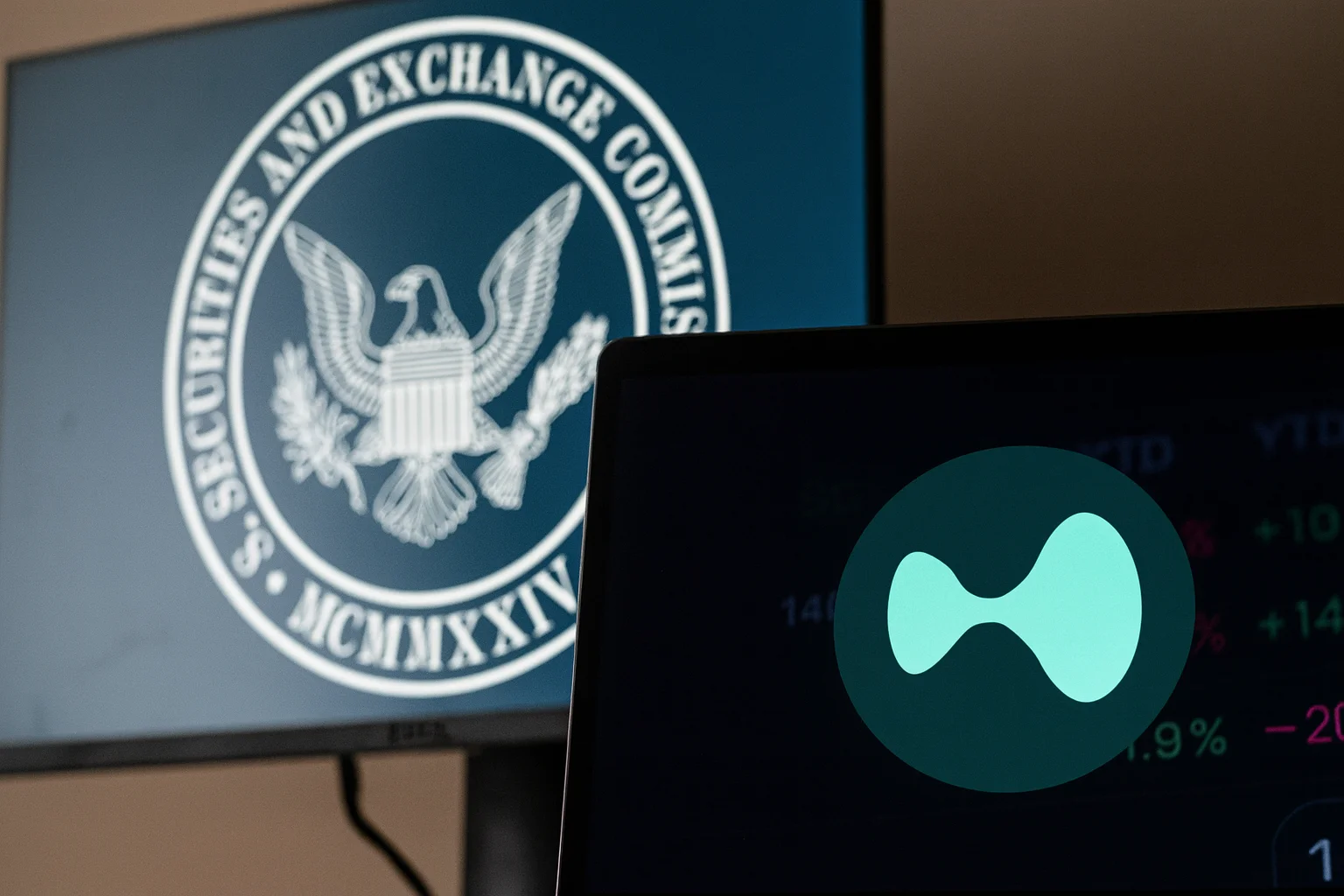News
Altcoin News
Altcoin News
Browse all Altcoin related articles and news. The latest news, analysis, and insights on Altcoin.
APT Comment and Price Analysis - October 27, 2025
APT Technical OutlookAptos network is moving full speed ahead. The network’s total value locked (TVL) is close to hitting $1 billion, and institutions like BlackRock are showing growing interest in tokenizing real-world assets (RWA) on the Aptos blockchain. This makes APT not just another altcoin but a Layer-1 network gaining real institutional traction. Falling Channel Structure Analyzing the chart, we see that APT has been trading inside a descending channel for a long time. The price has recently bounced from the lower border of the channel and started to move upward again. The current price is around $3.49, showing early signs of recovery.According to the channel structure, the short- to mid-term target is near $4.50, which lines up with both the upper channel resistance and a strong horizontal resistance zone; therefore, it’s likely to act as a major selling area. APT needs to break above the $3.68–$3.79 range for the bullish move to continue. A successful breakout could open the way toward $4.09–$4.35, and a clear move above $4.50 would confirm a trend reversal, targeting $4.93–$5.65 in the mid-term.Note that $3.39 is the first key support level. Below that, $3.10 and $2.96 are the next supports. If the price closes below $2.96, it could lead to a deeper drop back toward the lower channel zone.Support Levels: $3.39 → $3.10 → $2.96Resistance Levels: $3.79 → $4.09 → $4.50 → $4.93 → $5.65Summary:APT is rebounding inside a falling channel.Above $3.79, the price could aim for $4.50 and higher.$4.50 is the key breakout level for trend reversal.Holding above $3.39 keeps the bullish setup alive; below $2.96, risk increases.These analyses, not offering any kind of investment advice, focus on support and resistance levels considered to offer trading opportunities in the short and medium term according to the market conditions. However, traders are responsible for their own actions and risk management. Moreover, it is highly recommended to use stop loss (SL) during trades.
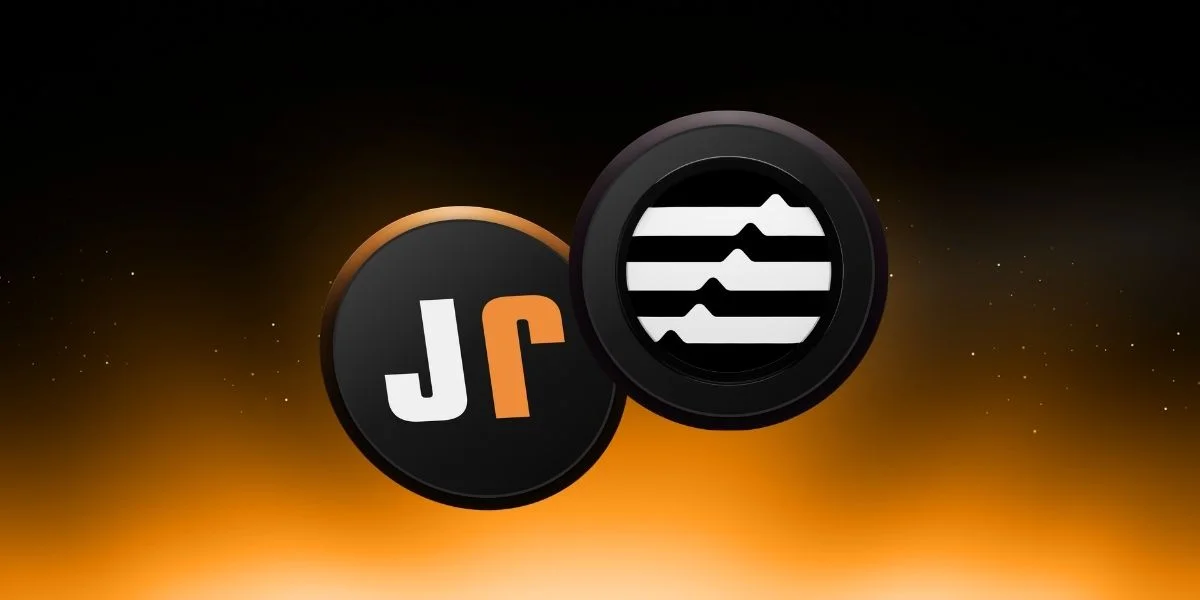
AAVE Comment and Price Analysis - October 27, 2025
AAVE/USDT Technical AnalysisThe GHO stablecoin project keeps expanding, and the Aave protocol is now launching on multiple blockchains, not just Ethereum. In addition, a large buyback program approved by the community has boosted confidence in the AAVE token. All these developments are starting to reflect on the price chart. Falling Wedge Formation Analyzing the chart, we see that AAVE shows a falling wedge pattern, which is typically a bullish reversal formation. The price has started to recover from the lower part of the wedge and is now showing signs of upward momentum. AAVE is currently trading around $235. In the short term, the $250–$257 area stands out as the first key resistance zone. A strong breakout above this range could push the price toward $300–$308. The $300–$308 region is especially important because it represents the main breakout level of the wedge. If the price breaks and holds above it, this would confirm a bullish trend reversal and could lead to higher targets in the medium term.Support Levels: $229 → $217 → $200Resistance Levels: $250–$257 → $277 → $300–$308 → $336 → $385Summary:AAVE is trading inside a falling wedge, a bullish setup.A breakout above $257 could start a move toward $300+.The main breakout zone is at $300–$308.Holding above $229 keeps the bullish scenario intact.Below $217, short-term weakness may appear.These analyses, not offering any kind of investment advice, focus on support and resistance levels considered to offer trading opportunities in the short and medium term according to the market conditions. However, traders are responsible for their own actions and risk management. Moreover, it is highly recommended to use stop loss (SL) during trades.

Investor Confidence Returns: $921 Million Flows into Bitcoin and Altcoin Funds
According to CoinShares' weekly report dated October 24th, there was a total inflow of $921 million into digital asset investment products in the last week. This strong performance was attributed to the recovery of investor confidence following the release of the US CPI (Central Price Index) data, which fell short of expectations. Expectations that the US Federal Reserve (Fed) may implement further interest rate cuts this year appear to have renewed buying appetite in digital asset markets.Weekly trading volumes reached $39 billion globally, well above the yearly average. This indicates that market interest and volatility remain high. US-based funds, in particular, saw inflows of $843 million, while Germany experienced a near-record week with $502 million. Meanwhile, Switzerland saw outflows of $359 million. CoinShares stated that this outflow was not due to selling pressure but rather to asset transfers between fund providers.Investors Turn to BitcoinOn an asset basis, Bitcoin was the clear winner of the week. With $931 million inflows, investors' risk appetite shifted back to Bitcoin. This brings the total inflow of $30.2 billion into Bitcoin products since the beginning of the year. While this figure is below last year's $41.6 billion, it's noteworthy that it has regained momentum with the start of the Fed's interest rate cut cycle. The situation was quite the opposite for Ethereum. A five-week streak of uninterrupted inflows ended this week with an outflow of $169 million. It was reported that investors held short positions throughout the week, despite continued interest in leveraged Ethereum ETPs (exchange-traded products). Volumes for Solana and XRP slowed significantly ahead of the expected ETF approvals in the US. Solana saw $29.4 million inflows, while XRP saw $84.3 million inflows.Meanwhile, limited outflows were observed for Sui and Cardano, with investors largely holding positions in market leaders. Litecoin, Chainlink, and multi-asset funds followed a balanced course, finishing the week with small positive inflows.By provider, CoinShares Digital Securities funds led the week with $498 million in inflows. iShares ETFs followed with $235 million and ProShares ETFs with $84 million. Grayscale Investments, however, fared negatively with an outflow of $118 million. The company has experienced a total outflow of $2.37 billion since the beginning of the year.In terms of country-by-country distribution, the US contributed $843 million, accounting for the majority of inflows, while Germany accounted for $502 million. In contrast, Switzerland was the weakest link with an outflow of $359 million. Canada and Brazil saw limited inflows, while investors in Hong Kong and Sweden remained cautious.The overall picture suggests that market participants are repositioning themselves in anticipation of interest rate cuts.
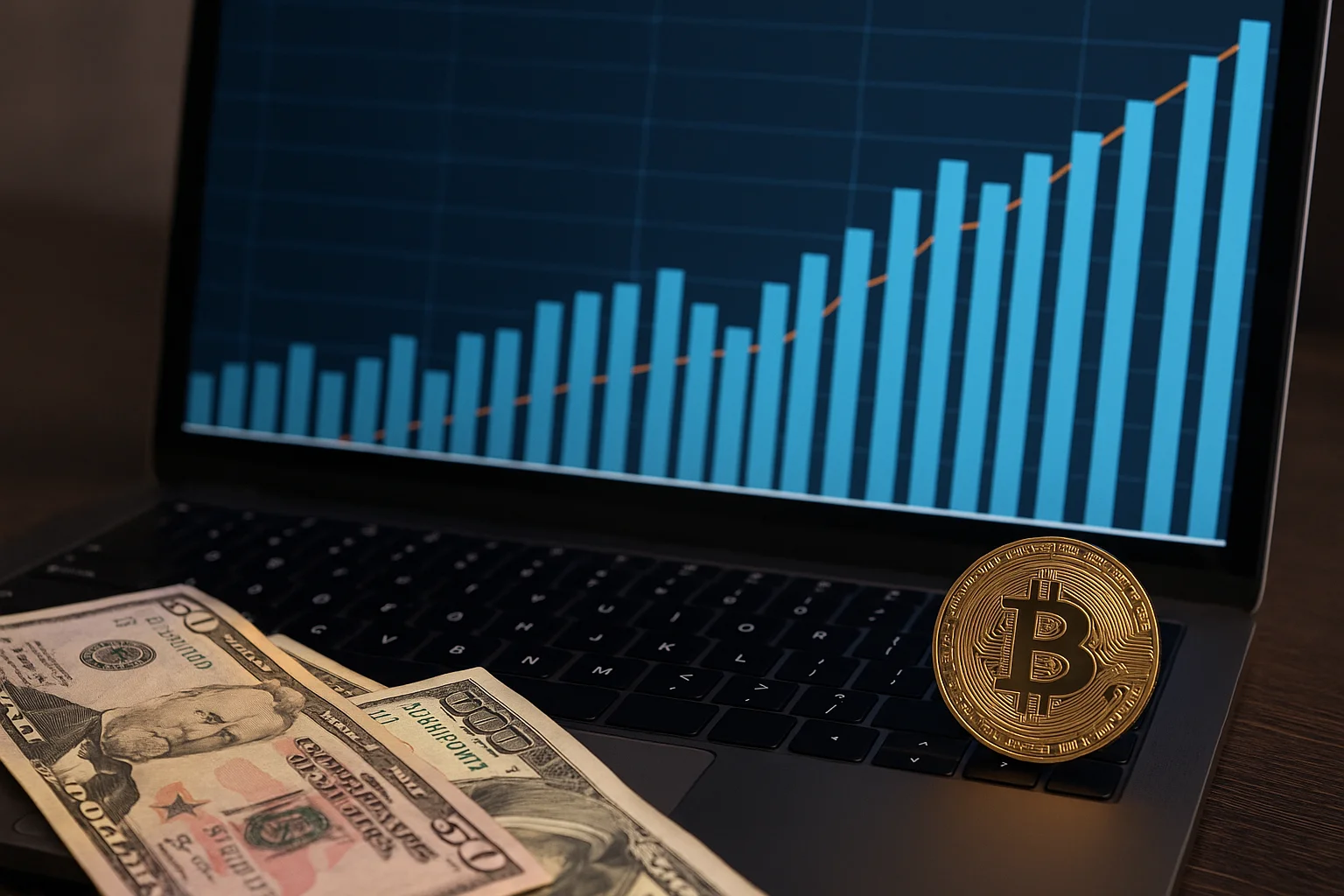
Historic Move from Japan: First Yen Stablecoin JPYC Launched
Japan is turning a new page in its financial system, long dominated by cash and credit card payments. The country aims to make digital currency a part of everyday finance by launching the world's first stablecoin pegged to the Japanese yen (JPY) on Monday, October 28th.Stablecoin Launches in JapanTokyo-based fintech startup JPYC Inc. announced the launch of its first fully legal yen stablecoin. The company's JPYC token is pegged 1:1 to the Japanese yen and is fully backed by local bank deposits and Japanese government bonds (JGB). This structure allows JPYC to offer a digital currency alternative where investors and businesses can trade securely.JPYC announced that it will waive transaction fees to attract users during the launch period and will generate revenue from interest earned on its government bond holdings. The company also announced that it will be traded on multiple blockchain networks, including Avalanche, Ethereum, and Polygon. After verifying their identity with Japan's "My Number" identification system, users can purchase tokens through a platform called JPYC EX.JPYC's goals are quite ambitious. The company aims to reach a circulation of 10 trillion yen (approximately $65 billion) within three years. For comparison, USDT, the world's largest stablecoin, currently has a market capitalization of approximately $183 billion. To achieve this goal, JPYC has already begun partnering with retailers, e-commerce, and enterprise software. For example, Densan System is developing JPYC-integrated payment systems, while Asteria plans to integrate the token into its data integration software. Crypto wallet provider HashPort has also announced that it will support JPYC transactions.This development is directly linked to Japan's new stablecoin regulations, which came into effect in 2023. Last year, the government updated regulations under the Funds Settlement Act and the Banking Act, requiring stablecoin issuers to be officially registered. This reform has boosted confidence in the sector and made the country one of the most regulated stablecoin centers in Asia.The launch of the JPYC also aligns with Japan's growing trend toward cashless payments. According to government data, the cashless payment rate, which stood at 13 percent in 2010, reached 42.8 percent by 2024. This growth paves the way for the adoption of assets like the digital yen.Meanwhile, Japan's major banks are taking similar steps. Mitsubishi UFJ, Sumitomo Mitsui, and Mizuho Bank are working on both yen- and dollar-denominated stablecoin projects. These initiatives could accelerate the transition of digital assets into mainstream finance in the country.According to experts, the success of the JPYC could also be a significant turning point for Asia as a whole. At a time when dollar-pegged tokens account for over 99 percent of the total stablecoin supply, a yen-based alternative is expected to diversify liquidity. In this way, Japanese companies will be able to make faster and lower-cost transactions by reducing their dependence on dollars in payments.
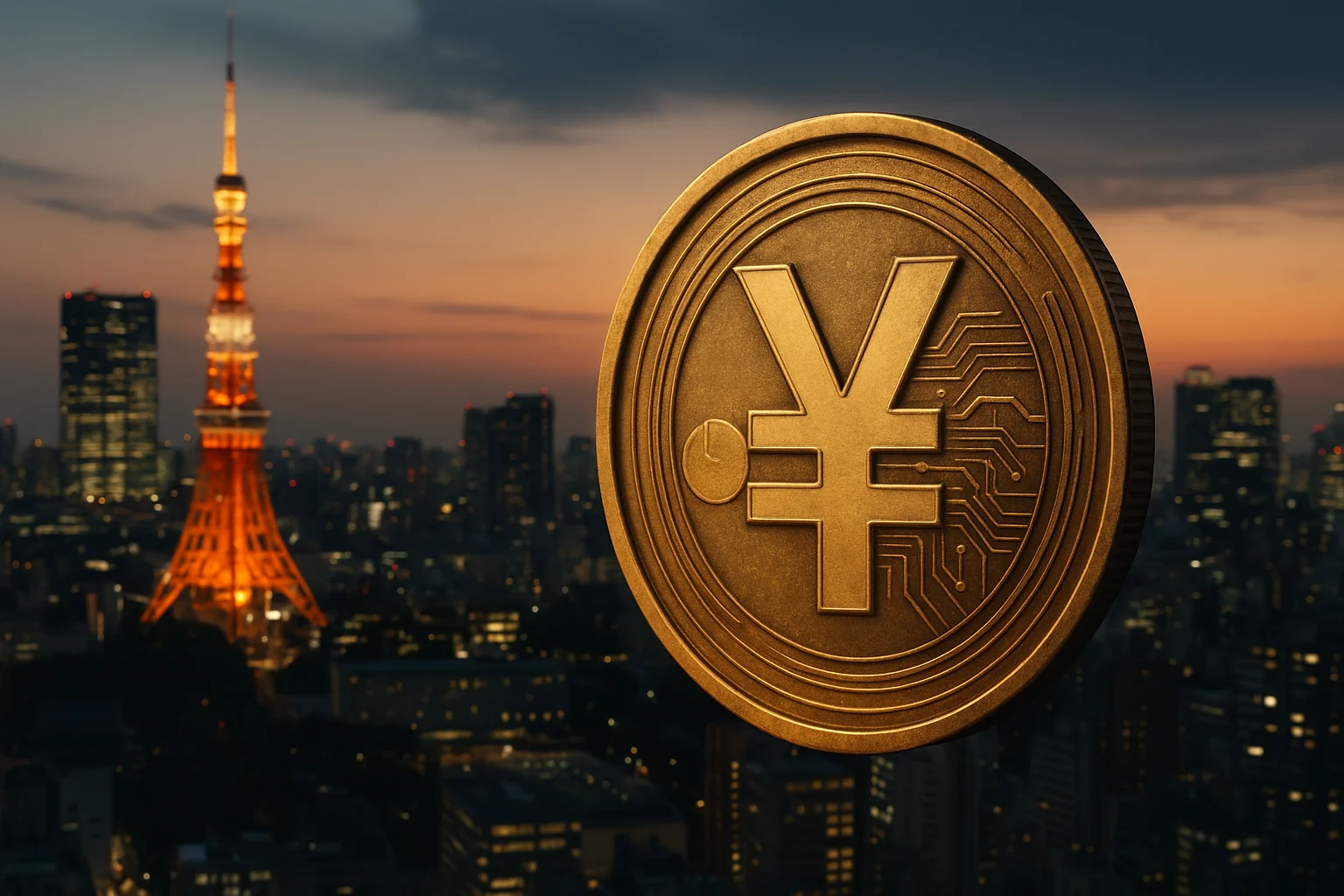
ETC Comment and Price Analysis - October 26, 2025
ETC/USDT Technical OverviewEthereum Classic is getting attention again. Recent network upgrades now burn a portion of transaction fees, making the chain more sustainable. Plans to move toward community-based governance are also boosting interest in ETC. These improvements are starting to show in the price charts. ETC Range Area Analyzing the chart, we see that ETC has been trading sideways for a long time, between $14.48 and $23.42. The price of the coin is now near the bottom of this range, where the horizontal support meets an uptrend line. This zone has brought strong buying reactions in the past.As long as ETC stays above $14.48, there’s potential for a rebound move. Upside targets are $18.50 first, then $19.80. For a trend reversal, ETC needs to break above $23.42 and hold there. If that happens, $37.89 and higher could become possible in the medium term.However, if $14.48 support breaks, selling pressure may increase, and the price could drop toward $12.20.Support Levels: $14.48 → $13.20 → $12.20Resistance Levels: $18.50 → $19.80 → $23.42 → $37.89In summary:ETC is trading near a major support zone at the bottom of its range.Holding above $14.48 keeps the bullish rebound scenario alive.A break below that level could trigger more downside.A close above $23.42 would confirm a trend reversal and open the way toward $37.These analyses, not offering any kind of investment advice, focus on support and resistance levels considered to offer trading opportunities in the short and medium term according to the market conditions. However, the user is responsible for their own actions and risk management. Moreover, it is highly recommended to use stop loss (SL) during the transactions.
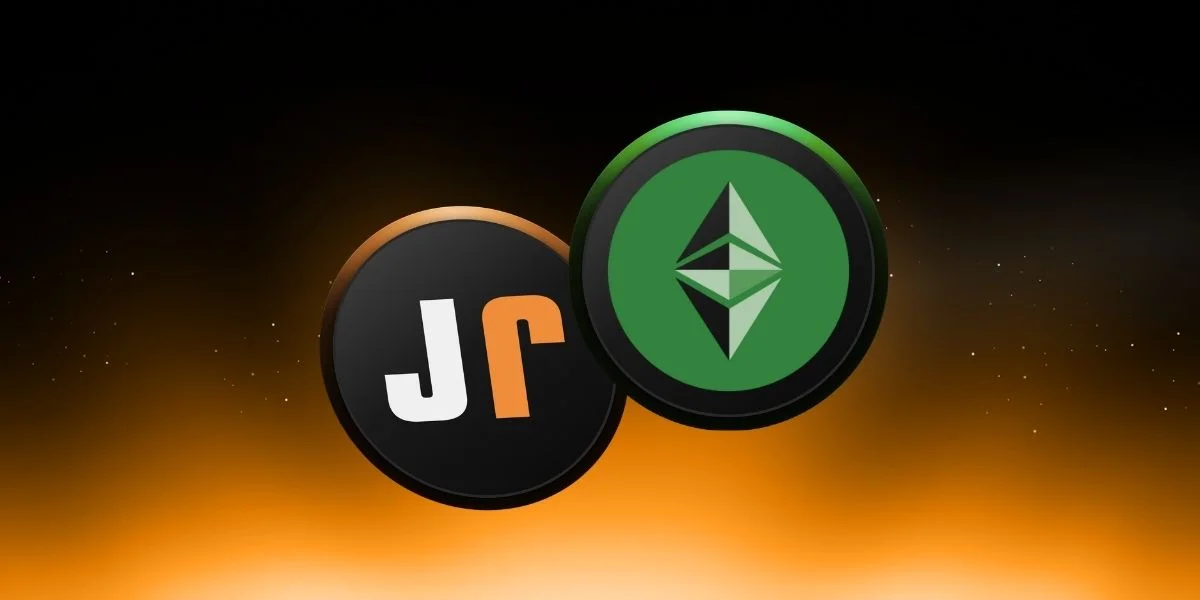
TAO Commentary and Price Analysis - October 25, 2025
TAO Technical AnalysisCombining AI and blockchain, TAO has recently gained strong attention. Trading volume has tripled, and institutional buyers are showing interest. The upcoming “halving” event in December will reduce supply, raising expectations for the future. Let’s see how this reflects on the price chart. Falling Wedge Formation Analyzing the daily chart, we see that TAO is still trading inside a large falling channel (or wedge). After being rejected around $457, the price found support above $361 and is now trading near $387. This area is important, as it shows that TAO is close to a possible breakout zone. The $361 level is now a strong support area. If the price closes below $332, it could pull back toward $255, and in a deeper correction, even $167.If the price continues upward, the first resistance is $420, followed by the key zone between $457–$460. A clear breakout above $457 would confirm the end of the downtrend and could start a new bullish wave.Targets after breakout:$420$457$500$580$631$819In short:As long as TAO stays above $361, the outlook remains positive. A daily close above $457 would confirm the breakout and could open the way to $580–$819 levels in the mid to long term.These analyses, not offering any kind of investment advice, focus on support and resistance levels considered to offer trading opportunities in the short and medium term according to the market conditions. However, traders are responsible for their own actions and risk management. Moreover, it is highly recommended to use stop loss (SL) during trades.
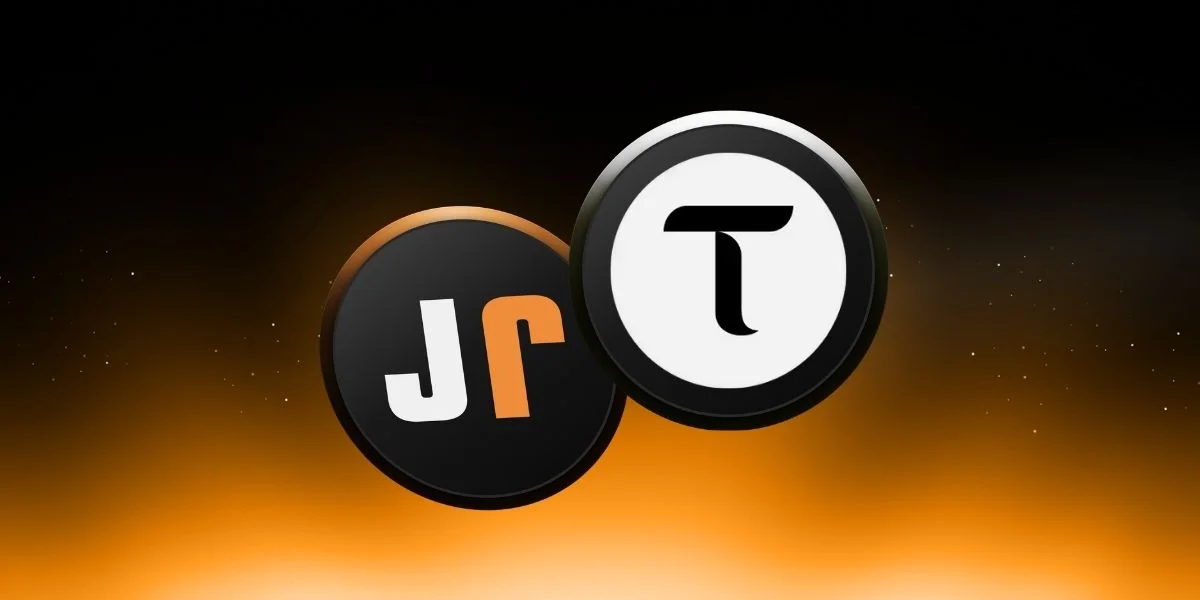
UNI Comment and Price Analysis - October 25, 2025
UNI/USDT Technical AnalysisUniswap has been quite active lately. The new v4 update gives developers more flexibility and lower costs, while investors are discussing ideas like revenue sharing for the UNI token. These updates make both on-chain activity and the UNI price structure more important than ever. Narrowing Triangle Structure Analyzing the chart, we see that UNI is still trading inside a symmetrical triangle pattern. The price is now very close to the breakout point, meaning a big move could be coming soon. Although trading volume is still low, the pattern is reaching its final stage, which often leads to a strong breakout.Currently, UNI has strong support between $6.03–$6.09, while the upper resistance of the triangle is around $6.28–$6.35. The price is moving between these two levels, showing that the market is undecided for now. However, the chart suggests that an upward breakout is more likely.If the price closes above $6.35, it could start a new bullish move.If it drops below $6.00, that would be a warning for a possible downward move.Support Levels: $6.09 → $6.03 → $5.84 → $5.54Resistance Levels: $6.28 → $6.35 → $6.47 → $6.53 → $6.75 → $7.12In summary:UNI is near the breakout point of a triangle pattern.A close above $6.35 confirms a bullish breakout.The target for the move is around $7.00 and higher.A drop below $6.00 increases downside risk.Strong and volatile price action can follow the breakout direction.These analyses, not offering any kind of investment advice, focus on support and resistance levels considered to offer trading opportunities in the short and medium term according to the market conditions. However, traders are responsible for their own actions and risk management. Moreover, it is highly recommended to use stop loss (SL) during trades.
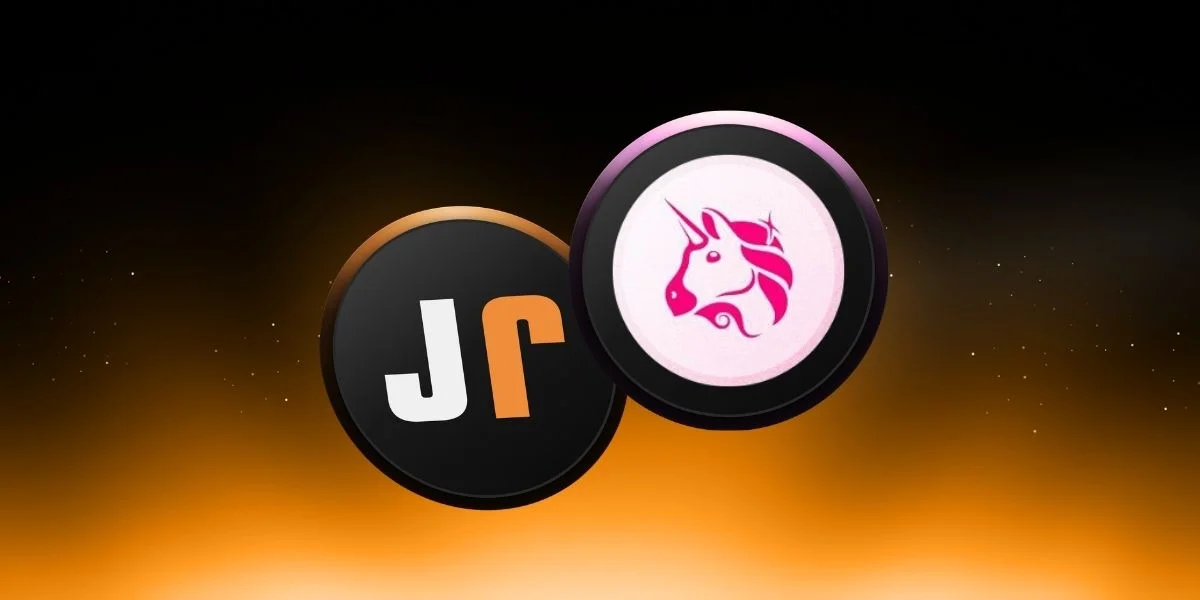
What is Immutable (IMX)?
While NFTs and Web3 games are growing rapidly in the blockchain world, Ethereum's slow and expensive transaction structure has long been one of the biggest obstacles to this development. This is precisely where Immutable X emerged. It developed a Layer-2 solution that maintains Ethereum's security while offering users fast and environmentally friendly transactions without paying gas fees.The company, named Immutable ("immutable"), was founded in Australia in 2018 by brothers James and Robbie Ferguson and Alex Connolly. In fact, it all began with the unexpected success of Gods Unchained, the blockchain-based card game the team developed. The ability for players to freely trade NFT cards generated significant interest, but transaction fees on the Ethereum network were a challenge for both players and developers. To address this issue, the team partnered with StarkWare to launch the Immutable X protocol, powered by ZK-rollup technology.Today, Immutable X is a completely gas-free (no transaction fees), carbon-neutral platform capable of scaling up to 9,000 transactions per second. Users can mint NFTs, buy and sell their assets, or instantly trade in-game items. All of this happens without compromising Ethereum's security. The platform's native token, IMX, provides discounts on transaction fees, staking rewards, and governance rights.Thanks to Immutable X's global orderbook, NFT liquidity can be shared among platforms like Rarible, GameStop Marketplace, and TokenTrove. So, how exactly did Immutable come about, how did it grow, and why is it so talked about? In this guide, you'll find step-by-step answers to all your questions, including what Immutable is, what the IMX token does, and how the platform works.Immutable's Definition and OriginImmutable is an Ethereum Layer-2 protocol developed to make buying and selling digital assets faster, cheaper, and more environmentally friendly. The platform's goal is to create a gas-free infrastructure, particularly for blockchain-based games and NFT projects. During 2017–2018, the Ethereum network was so congested that minting an NFT or selling in-game assets sometimes cost tens of dollars. This posed a significant obstacle for both small developers and gamers. To solve this problem, the Immutable team turned to ZK-rollup technology. This technology aggregates transactions off-chain and writes their hash to the Ethereum main chain, improving both speed and efficiency.The project was developed by the Australian-based company Immutable. The company's founders are brothers James and Robbie Ferguson, and technical director Alex Connolly. Immutable's story actually began with the popular blockchain game Gods Unchained. This game, which allowed players to trade their cards as NFTs, quickly gained significant traction, but its popularity also brought with it high transaction fees. Due to Ethereum's limited capacity, players were forced to pay significant gas fees for almost every transaction. The Immutable team wanted to solve this problem, not only for themselves but for the entire ecosystem, forming a strategic partnership with StarkWare and laying the foundation for the Immutable X project.Built on StarkWare's StarkEx engine, Immutable X maintains Ethereum's security while scaling up to 9,000 transactions per second. Users benefit from completely on-chain security without paying any gas fees when minting, trading, or transferring NFTs. The Immutable team aimed to make a difference not only from a technical perspective but also in terms of environmental sustainability. With Ethereum's transition to Proof-of-Stake in 2022, Immutable made all its transactions carbon neutral, distinguishing itself in the NFT space with its environmentally friendly approach.Immutable X's vision is to deliver blockchain technology without the user even noticing it. The team's goal is to provide a seamless experience for millions of players and developers, without them even realizing they're interacting with the blockchain. Players can freely buy and sell in-game assets without having to deal with complex wallet transactions. Immutable continues to pursue this vision: building an ecosystem that manages complex blockchain processes in the background while providing users with a simple, fast, and enjoyable digital asset experience.Immutable's History: Key MilestonesImmutable quickly became one of the most well-known Layer-2 projects in the blockchain world. What began as a game studio startup in 2018 evolved into a billion-dollar ecosystem within a few years. Below are some of the most notable milestones in Immutable's development:2018: Company Founding and the Birth of Gods UnchainedImmutable was founded in Sydney in 2018. At the time, founders James and Robbie Ferguson, along with technical director Alex Connolly, were developing a blockchain-based card game called Gods Unchained. The game quickly gained significant traction with its idea of "storing and trading players' cards as NFTs." However, Ethereum's limited transaction capacity and high gas fees made it difficult for the game to achieve mass growth. This led the team to seek solutions, and the idea for Immutable X was born during this period.Immutable also closed a $15 million funding round in 2018 with the following investors: 2019-2020: StarkWare Collaboration and Development of the ZK-Rollup InfrastructureTo address Ethereum's scalability issues, Immutable turned to a zero-knowledge proof-of-concept (ZER)-based technology. This technology was StarkWare's StarkEx system. Through this collaboration, the parties began work on a Layer-2 protocol specifically for NFTs. The goal was to create the first solution that enables "gasless NFT trading." Infrastructure testing was conducted during this period, and the protocol's alpha version was released to developers at the end of 2020.2021: Immutable X Launch and IMX Token ReleaseThe Immutable X platform was officially announced in March 2021. Later that year, the platform's native token, IMX, was launched. This token, produced under the ERC-20 standard, was designed to be used for transaction fee payments, staking rewards, and governance voting. The launch of IMX was a turning point for Immutable X in the NFT world. Users could now mint NFTs without paying gas and trade their in-game assets almost instantly.That same year, Immutable secured a $60 million Series B round; investors included major names such as Coinbase Ventures, BITKRAFT Ventures, and Galaxy Digital. This funding allowed Immutable X to be launched globally.2022: GameStop partnership and web3 gaming breakthroughIn February 2022, Immutable announced a major partnership with GameStop. This agreement built GameStop's NFT marketplace on Immutable X's infrastructure. A $100 million grant fund was also established to incentivize game developers. This development demonstrated Immutable's rise to leadership in web3 gaming infrastructure, beyond NFTs. That same year, Immutable's platform was adopted by ambitious games such as Illuvium, Guild of Guardians, and PlanetQuest. 2023-2024: Immutable zkEVM and ecosystem expansionAt the end of 2023, the Immutable team took a new step and announced its second-generation blockchain infrastructure, Immutable zkEVM. Because this new architecture is fully compatible with the Ethereum Virtual Machine (EVM), developers could easily migrate existing Ethereum projects to the Immutable ecosystem. zkEVM minimized transaction costs while maintaining a balance of security and scalability.2024 was a year of significant growth for Immutable. More than 150 million transactions were successfully completed, and the number of active developers on the platform surpassed 500. The Immutable Passport wallet reached over 4 million users, and its one-click login feature made it a favorite tool for Web3 gamers.2025: Chain convergence and mobile gaming expansionIn 2025, Immutable announced its most significant technological update in its history: the unified chain called Immutable Chain. With this update, the Immutable X (Layer-2) and zkEVM infrastructures will be combined into a single structure. All games and NFT projects will be able to run on this chain without requiring users to manually migrate. Testing for the merger began in September 2025 and is expected to be completed by the end of the year.At the same time, Immutable established a new Mobile Games Division to enter the $120 billion mobile games market. With this initiative, it aims to develop NFT marketplaces and in-game asset systems integrated into mobile games. Ubisoft's Might and Magic: Fates, announced in partnership with Immutable in early 2025, was one of the first examples of this strategy.Today: The Immutable ecosystemToday, Immutable is considered one of the strongest infrastructures in the Web3 gaming industry, with over 500 games, over 2 million monthly active users, and hundreds of millions of NFT transactions. The company's goal by the end of 2025 is to bring all these chains under one roof, creating a "game-focused super ecosystem." As of October 2025, the IMX price is changing hands at $0.51. Why is Immutable Important?Immutable X stands out by offering numerous innovations for decentralized NFT and gaming trading. Here are its key advantages:High-performance infrastructure without gas feesImmutable X operates without gas fees, preserving the security of Ethereum thanks to StarkWare's ZK-rollup technology. While the standard Ethereum network processes ~30 transactions per second, Immutable's layer-2 can handle up to 9,000 transactions per second. This is critical for supporting thousands of users of games and NFT marketplaces without delay.Furthermore, with Ethereum's transition from PoW to PoS, transactions on Immutable X have become carbon neutral. Immutable powers all NFT transactions with green energy without purchasing carbon credits, making it particularly popular with environmentally conscious artists and gamers.Global liquidity and shared marketplacesImmutable's shared global order book integrates NFTs with leading platforms like Rarible, GameStop, and TokenTrove. This way, when an NFT is listed, it automatically becomes visible in all these markets, increasing liquidity exponentially. Users can trade from a single interface without the need for a bridge between different platforms.Extensive Partnerships and a Fast-Growing EcosystemImmutable partners with major games like Illuvium, Guild of Guardians, and PlanetQuest. Collaborations with giants like GameStop and Ubisoft expand its user base. By 2025, Immutable had 2 million monthly active users on zkEVM and over 500 games integrated across the platform. The presence of strong investors like Temasek, Coinbase Ventures, and BITKRAFT backs it, further boosting confidence.User-Friendly Products and Developer ToolsImmutable offers two different interfaces based on technical level. Players can easily create accounts with their email addresses thanks to the Immutable Passport wallet. Developers can access REST APIs, SDKs (e.g., wallet integration with the Link SDK), and payment infrastructure tools like Immutable Checkout. All of these products aim to simplify the work of game and marketplace developers. These features make Immutable a standout among NFT and Web3 gaming platforms. Immutable's success stems from its ability to combine user experience (fast transactions, low costs), technical infrastructure (security, scalability), and economic incentive mechanisms (staking, reward programs).IMX Token EconomyAt the heart of the Immutable ecosystem, the IMX token drives the platform's entire economic cycle. This token plays an active role in many areas, including staking rewards, transaction fees, governance votes, and community incentives. However, to understand IMX's long-term value, it's important to examine its distribution structure and vesting schedule. Immutable has a total supply of 2 billion IMX tokens. This supply is divided into different categories and will enter circulation gradually between 2021 and 2025. The chart below from its whitepaper represents Immutable's official "Full Vesting Schedule": Foundation Reserve – A portion allocated to ensure the long-term sustainability of the project. This portion is typically used for new product development or grant programs in the coming years.Public Sale 1 & 2 – Tokens sold to investors during IMX's public sale periods. These sales strengthened project funding following Immutable X's 2021 launch.Ecosystem Development – This portion comprises the largest portion of the token supply. This portion funds game studios, NFT projects, partner incentives, and community rewards. This portion plays a key role in Immutable's strategy to grow its gaming ecosystem.Project Development – A portion allocated to fund the Immutable team, engineering, and operational expenses. This portion supports the long-term development of the platform's technical infrastructure.The chart shows a vesting period of approximately four years, from November 2021 to October 2025. While only a small portion of the token supply is released during the first year, the amount in circulation increases rapidly by 2023. In the 2024–2025 period, the majority of the shares allocated specifically to ecosystem development and project funds are released.Immutable's Founders and TeamImmutable's core team consists of experienced Web3 game and blockchain infrastructure experts. The company was founded by James Ferguson, Robbie Ferguson, and Alex Connolly, who left the God Unchained team in 2018. Based in Sydney, Immutable includes expert developers from companies such as Wizards of the Coast, Gameloft, and Riot Games.The project also has strong investor support. Major funds such as Temasek, Coinbase Ventures, BITKRAFT Ventures, and AirTree Capital have invested in Immutable. This capital finances both the development of the infrastructure and the expansion of the gaming ecosystem. The Immutable team, working with institutional support and the broader community, is committed to taking the platform to a professional operating level. The community also participates in the project through the governance process; token holders can vote on network parameters and treasury management. Frequently Asked Questions (FAQ)Below are some frequently asked questions and answers about Immutable:What is Immutable (IMX) and what does it do?: Immutable (IMX) is a gas-free Layer-2 platform built on the Ethereum blockchain. It focuses primarily on buying and selling NFTs and Web3 game assets. Users can mint and trade NFTs while freely holding the assets in their wallets. The $IMX token provides transaction fee payments, staking rewards, and governance rights.What networks does IMX work on?: Immutable X is a L2 solution that primarily runs on the Ethereum network. The IMX token is hosted on the Ethereum blockchain using the ERC-20 standard. Immutable zkEVM, which launched in 2024, is a new Ethereum-compatible chain; all Immutable X transactions will be merged onto this unified network by the end of 2025. In short, the Immutable ecosystem utilizes Ethereum's Layer-2 solutions. Who founded Immutable?: Immutable was founded in Australia in 2018 by former God Unchained developers James Ferguson, Robbie Ferguson, and Alex Connolly. The team behind the project has specialized experience in card games and blockchain infrastructure. The project is also backed by Temasek, Coinbase Ventures, and other investors.When was the IMX coin released, and what was its price like?: The IMX token was released alongside the launch of Immutable X in November 2021. During the initial listing, the price of IMX opened at around $5.6 (Token Generation Event). Significant volatility occurred during the launch period; later, the market stabilized and the price fell. The current value may be volatile because IMX is still a relatively new project token.What does the IMX token do?: IMX is the utility token of the Immutable ecosystem. A portion of the fees charged for every transaction on the platform is converted to IMX and transferred to a staking pool. Users earn rewards from this pool by staking IMX. IMX holders can also participate in governance votes for the future of the network. In short, IMX offers transaction fee discounts, staking revenue, and management authority.Has an airdrop been held for Immutable, or will there be another?: There is no known official airdrop campaign for Immutable. The coin is listed after investor token distributions are collected, and users have not been rewarded with an airdrop. Instead, the platform distributes IMX tokens to its users through the Trading Rewards Program. Users who buy, sell, or stake NFTs can earn IMX by taking advantage of these reward mechanisms.Is Immutable reliable and worth investing in?: Immutable is an innovative project with a strong technical infrastructure and community support. The support of major investors like Temasek and Coinbase, as well as well-known partnerships with Ubisoft and GameStop, increases confidence. However, it's important to remember that new projects in the crypto space still carry volatility and technical risks. It's important to monitor market developments and act according to your risk tolerance before investing. It's generally recommended to start with small amounts and follow official announcements. What other products does Immutable offer? The Immutable ecosystem is not just a DEX; it consists of various applications and tools. For example, Immutable Passport is a non-custodial (you control) wallet service that allows you to create wallets via email. The Global Orderbook mechanism increases liquidity by spreading assets across marketplaces like Rarible and GameStop. Additionally, Immutable Play offers in-game mission and reward systems, and Immutable Checkout offers features like credit card/fiat payments to developers. These products aim to simplify the Web3 gaming experience for developers and players.Don't forget to follow the JR Kripto Guide series to stay up-to-date on the latest developments in Immutable and the Web3 gaming ecosystem.
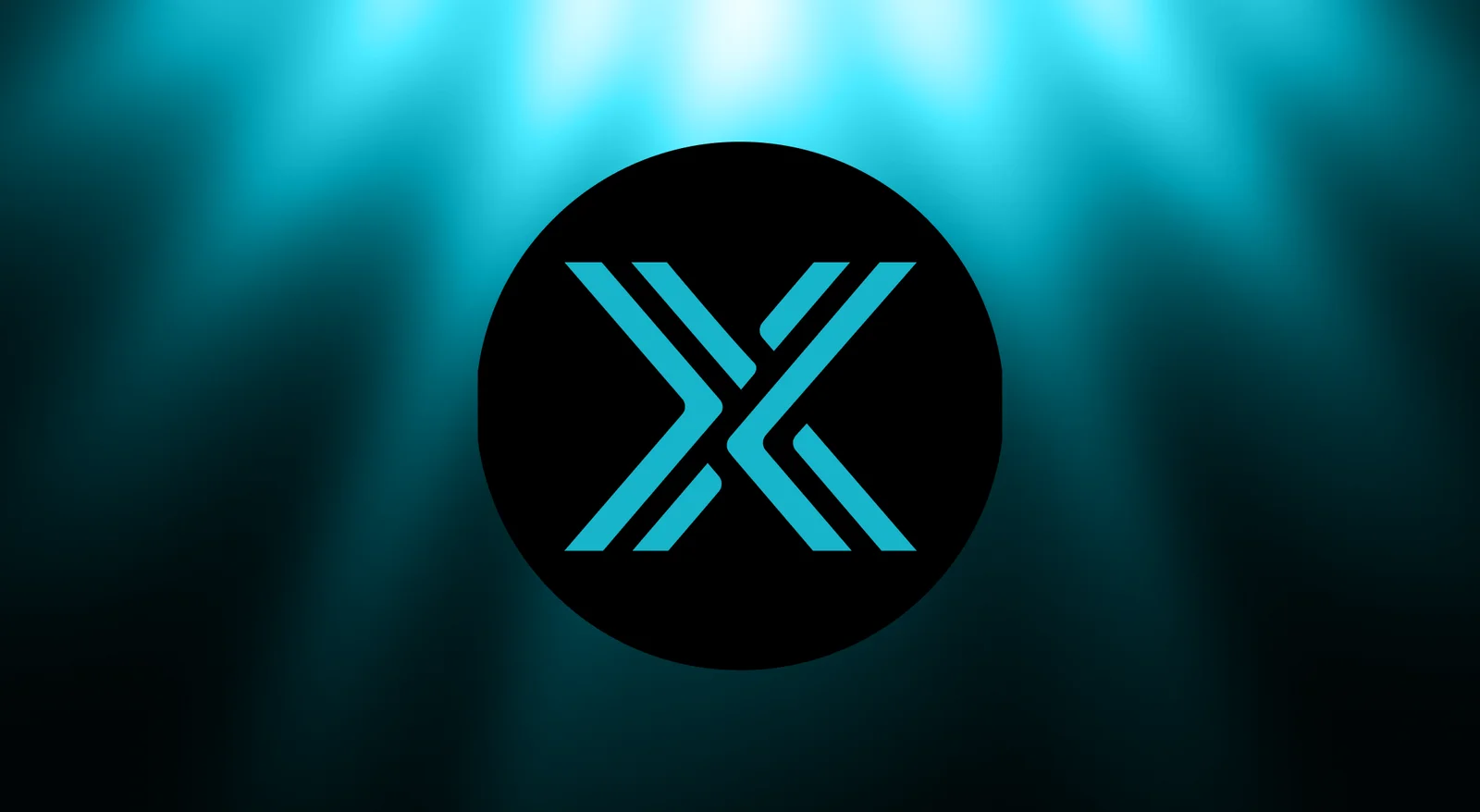
Binance Founder CZ Pardoned: Trump Makes A Statement
US President Donald Trump has made a decision that has resonated throughout the crypto world. President Trump pardoned Changpeng Zhao (CZ), the co-founder and former CEO of Binance. White House Press Secretary Karoline Leavitt explained that this step was taken to "end the Biden administration's war on crypto."Leavitt stated, "President Trump has exercised his constitutional authority to pardon Mr. Zhao to end the Biden administration's unjust war on the cryptocurrency industry."Trump's "crypto-friendly" messageTrump responded to questions at the press conference, saying, "Yes, I pardoned him. You're talking about the crypto world, right? Many people said he was innocent." Trump, who stated that he didn't know Zhao personally, said, "I don't know him, but a lot of good people have made requests for him. They said what he did wasn't a crime. And I listened to them." Trump's pardon was interpreted as a continuation of his crypto-friendly policy. Trump, who has pardoned figures like Ross Ulbricht since taking office, recently introduced the World Liberty Financial (WLFI) project and made headlines with his promises, "We will make America the capital of crypto."CZ Returns to the StageBinance founder CZ was accused of failing to maintain effective anti-money laundering controls as part of a 2023 settlement with US authorities and received a four-month prison sentence. The company, meanwhile, agreed to a $4.3 billion fine at the same time.Zhao, who completed his sentence in September 2024, is now officially cleared of his criminal record following the pardon. This allows him to freely enter the US and resume business activities in the country. Furthermore, the "stay out of office" clause in the 2023 settlement becomes void after the pardon. This strongly signals that Zhao may return to the Binance ecosystem. Zhao, in a brief statement from his X account, said, “I am deeply grateful. We will do everything we can to make America the capital of crypto.” Rapid Market ReactionFollowing the amnesty, the market reacted immediately positively. The price of Binance’s native token, BNB, increased by nearly 4 percent, reaching over $1,140. According to current market data, BNB’s market capitalization reached $157 billion. At the same time, the Trump-backed WLFI token gained over 15 percent. Investors believe this development signals a shift in the general perception of crypto in the US. Experts believe the “CZ amnesty” could symbolize a return to Washington’s crypto-friendly policies.Trump’s decision is a striking message on both political and economic fronts. It could mark the return of an era that paved the way for cryptocurrencies and encouraged innovation over regulation.
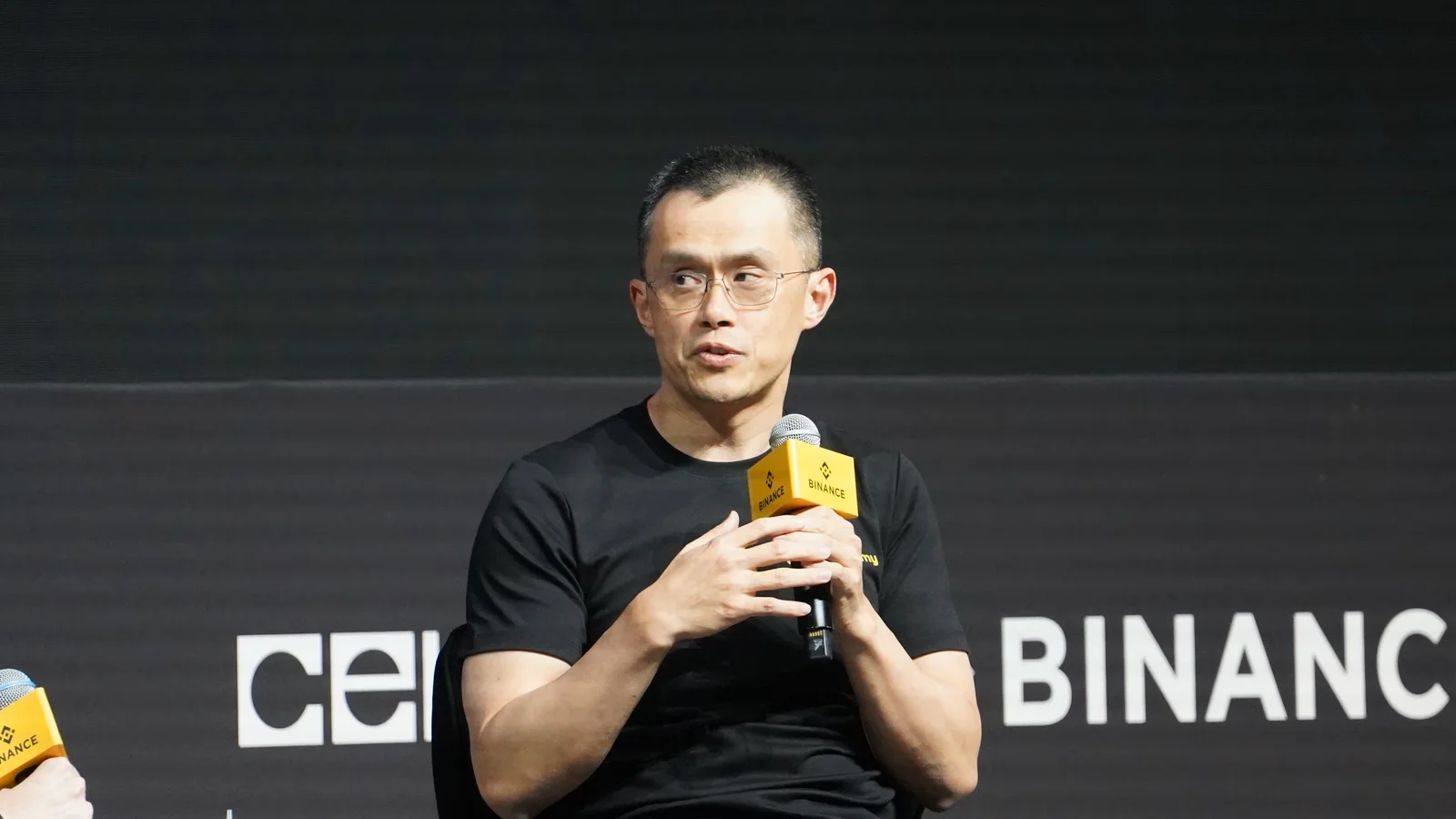
SHIB Comment and Price Analysis - October 23, 2025
SHIB/USDT Technical AnalysisThere has been some activity on the part of Shiba Inu again. More than 1.5 million wallets still hold SHIB, showing investors’ continued trust in the project, though the price has recently pulled back. Shibarium network activity is increasing at the same time, and token burns are reducing the total supply. This is a long-term positive signal. Falling Wedge Formation Analyzing the chart, we see that SHIB is moving inside a falling wedge pattern, signaling a potential bullish breakout. The price is currently around $0.00001010, holding near the strong support zone between $0.00000960 – $0.00000980. This area acts as both horizontal support and the bottom of the wedge, making it a key level for buyers.We can see some liquidity wicks below, showing sellers are weakening while buyers are getting stronger. If SHIB continues to rise, it could target $0.00001290 – $0.00001350. A clear breakout above $0.00001350 may trigger a stronger move toward $0.00001546 and beyond.Summary:SHIB is trading inside a falling wedge pattern.Strong support: $0.00000960 – $0.00000980.The pattern suggests a higher chance of an upward breakout.Support zones: $0.00000980 → $0.00000960 → $0.00000844.For confirmation, SHIB needs to stay above $0.00001350.These analyses, not offering any kind of investment advice, focus on support and resistance levels considered to offer trading opportunities in the short and medium term according to the market conditions. However, traders are responsible for their own actions and risk management. Moreover, it is highly recommended to use stop loss (SL) during trades.

HYPE Comment and Price Analysis - October 23, 2025
HYPE/USDT Technical AnalysisRecently, a major development has taken place for HYPE. Hyperliquid Strategies has filed an S-1 registration with the SEC, aiming to raise up to $1 billion in capital. According to the filing, the funds will mainly be used for HYPE token purchases and to expand the company’s institutional crypto portfolio. The company currently holds 12.6 million HYPE tokens and about $305 million in cash reserves. This can be considered a strong signal of confidence in HYPE.Analyzing the chart, we see that HYPE is still moving within a downward trend pattern. Falling Trend The price is trading below the main descending trendline and is currently around $40.05. In the short term, a bounce seems likely. On the 4-hour chart, the price found strong support in the $36.45–$38.58 area, which is now an important demand zone. If the upward movement continues, the first resistance is near $41.37, while the main resistance zone sits between $43–$44. This area is critical because it combines both a horizontal resistance level and the descending trendline, making it a potential profit-taking zone.So, the short-term upside potential remains open toward the $43–$44 range. However, as the price approaches that zone, selling pressure is expected to increase. If the price pulls back, $39.29 and $38.58 are short-term supports, while a deeper drop below $36.45 could increase risk.Summary:HYPE is making a short-term recovery within a downtrend.$43–$44 is a key resistance and likely selling zone.Gradual upside movement may continue toward that area.Support levels: $39.29 → $38.58 → $36.45.A daily close above $44 could confirm a trend reversal; otherwise, downward pressure may persist.These analyses, not offering any kind of investment advice, focus on support and resistance levels considered to offer trading opportunities in the short and medium term according to the market conditions. However, traders are responsible for their own actions and risk management. Moreover, it is highly recommended to use stop loss (SL) during trades.
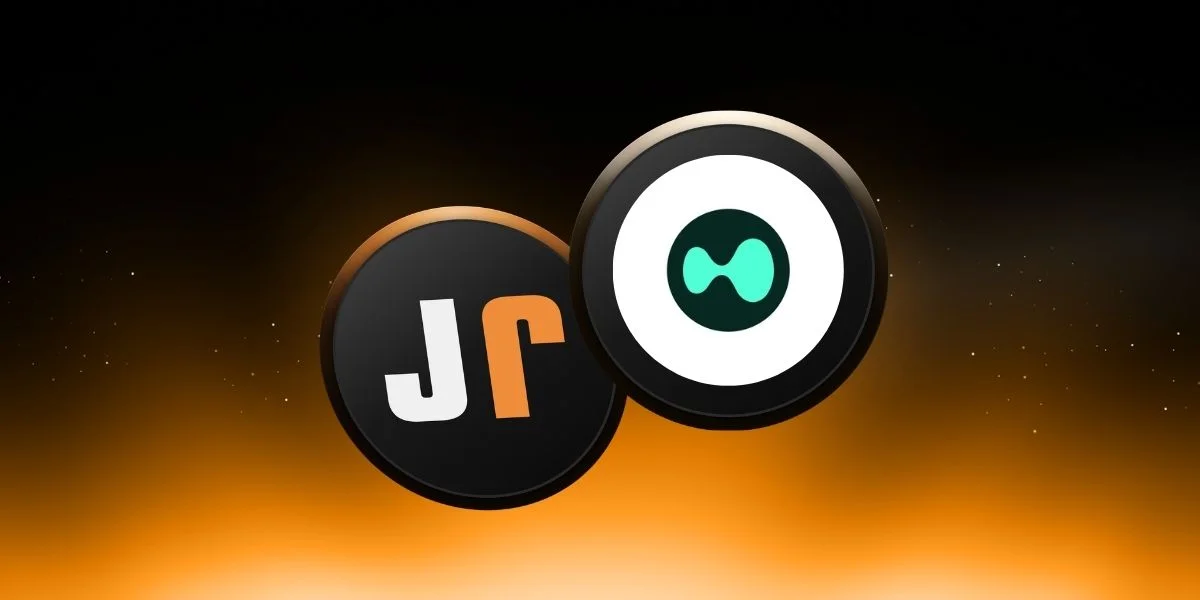
What is World Liberty Financial (WLFI)?
World Liberty Financial (WLFI) is an innovative decentralized finance (DeFi) platform that aims to bring traditional financial services, ranging from spot transactions to stablecoins, to the blockchain. Founded in 2024, the project attracted attention from its inception thanks to its close relationship with former US President Donald Trump and his family. With the slogan "Where DeFi and traditional finance meet," WLFI aims to provide users with access to financial services using crypto assets without needing banks. Trump's support and investment both brought visibility to the project and sparked discussions of conflicts of interest in some circles. Within the first year of its launch, the platform launched its own dollar-denominated stablecoin, which began to be used in large-volume institutional transactions.So, what is World Liberty Financial, how did it come about, and why is it so talked about? In this guide, we will take a detailed look at all the frequently asked questions about the WLFI platform, from its definition and history to its founders and the WLFI token.The Definition and Origins of World Liberty FinancialWorld Liberty Financial (WLFI) is a hybrid DeFi protocol that aims to bring together traditional finance and the crypto world. The platform allows users to access financial services without a bank or brokerage using their crypto assets. In this context, WLFI aims to bring together decentralized exchanges, stablecoins, lending/borrowing, and payment solutions under one roof. The core idea is to adapt traditional financial instruments to the crypto world while maintaining the transparency of blockchain.WLFI's emergence is directly linked to the Trump family's entry into the cryptocurrency sector. In September 2024, Donald Trump announced that his sons, Eric Trump and Donald Trump Jr., would launch a new crypto venture. This venture was soon launched under the name World Liberty Financial, and its first product, the $WLFI token, was launched in October 2024. During the project's launch, the Trump family made their support clear; Donald Trump even declared himself the platform's "chief crypto advocate." WLFI's vision was shaped with this support: With the slogan "Where DeFi meets TradFi," it aimed to simplify daily financial transactions and reach more people. One of the cornerstones of the WLFI platform is USD1, a US dollar-pegged stablecoin. This coin is fully backed by real-world assets (such as US Treasury bonds, cash reserves, and equivalents) and operates at a one-to-one peg to the dollar. The WLFI team planned USD1 for late 2024, and the stablecoin officially launched in March 2025. With USD1, users can trade with a more stable asset than highly volatile cryptocurrencies. USD1 is also used as the common currency in various products within the WLFI ecosystem, such as payment cards and lending. In other words, we're talking about a structure that offers the equivalent of the traditional dollar in a blockchain environment.Another key feature that distinguishes WLFI is its multi-chain architecture. From day one, the platform was designed to be compatible with multiple blockchain networks such as Ethereum, BNB Chain, and Solana. This architecture allows users to easily move their assets between different networks via bridges and manage them from a single interface without fragmenting liquidity. For example, it's possible to convert a token on the Ethereum network to USD1 or WLFI tokens via WLFI without needing to transfer it to Solana. These integrations aim to alleviate the network incompatibility issues frequently experienced by DeFi users and make WLFI the center of a broad ecosystem.The Trump family's open support for the project played a key role in both the WLFI's definition and its positioning. A technically robust DeFi project, WLFI has also attracted political attention. Donald Trump's positive approach to cryptocurrencies during his 2024 election campaign and his subsequent direct association with the project helped WLFI gain rapid popularity. Although the project team describes WLFI as a "non-political, open-to-everyone financial platform," the Trump connection has become one of the project's most prominent elements for both supporters and critics. Indeed, the New York Times wrote that WLFI blurs the line between private sector and government policy to an unprecedented degree. This strong political connection has earned WLFI both trust and skepticism from some, making its inception unique.World Liberty Financial's History: Key MilestonesDespite its short history, WLFI has been in the news for many significant developments. Let's now take a chronological look at the critical milestones from its launch to the present:2024: Project Announcement and First StepsIn September 2024, Donald Trump announced the launch of a new crypto project and announced that his sons, Eric Trump and Donald Trump Jr., would lead the initiative. The following October, World Liberty Financial was officially launched, and the platform's native cryptocurrency, the $WLFI token, was made available for public sale. Initial token sales fell short of expectations; by the end of October, only $2.7 million in WLFI tokens had been sold. When the project was first introduced, it risked being perceived as a "memecoin" or merely a speculative venture. To counter this perception, the Trump family's support was frequently emphasized and the WLFI's long-term vision was highlighted. November 2024: Trump's Election VictoryDonald Trump's victory in the US presidential election in November 2024 completely changed the trajectory of the WLFI. Trump's re-election fueled expectations that regulatory pressure in the crypto sector would ease, paving the way for Trump-backed projects in particular. This development led to a surge in interest in the WLFI token.February 2025: Justin Sun Partnership and SEC DevelopmentsIn early 2025, WLFI received a major investment from Justin Sun, one of the most recognizable figures in the crypto world. Chinese billionaire Sun, founder of the Tron blockchain, invested at least $75 million in WLFI in February, becoming a partner in the project and also joining the team as an advisor. This development demonstrated that WLFI has garnered significant support not only in the US but also internationally.Interestingly, immediately after Justin Sun joined WLFI, news broke that the US Securities and Exchange Commission (SEC) had suspended an investigation into Sun's companies. This was widely interpreted as a sign that the Trump administration was taking a more positive approach to the crypto sector. However, it also paved the way for criticisms such as "using political influence."On the other hand, this partnership also strengthened WLFI's technical infrastructure. Plans for integration with Justin Sun's blockchain, Tron, began to become clear during this period, further expanding WLFI's multi-chain structure.March 2025: USD1 stablecoin launchIn March, the WLFI team launched its long-anticipated stablecoin, USD1. USD1 was introduced as a digital currency pegged one-to-one to the US dollar and backed by US Treasury bonds, cash, and similar low-risk assets as reserves. At the launch, WLFI co-founder Steve Witkoff (father of CEO Zach Witkoff) announced that USD1 would be available not only on Ethereum and BNB Chains, but also on the Tron network. With this move, USD1 began operating on multiple blockchains and quickly attracted the attention of both individual users and large institutional investors. Millions of dollars worth of USD1 were quickly printed and circulated within the WLFI ecosystem, becoming a central part of the platform. May 2025: Abu Dhabi deal and conflict of interest debatesIn May 2025, WLFI was at the center of a high-profile international transaction. MGX, the state-backed investment company led by Sheikh Tahnoun bin Zayed Al Nahyan of the United Arab Emirates, announced that it would use WLFI's stablecoin, USD1, as a payment instrument in a major deal with Binance. According to the announcement, MGX would use USD1 for transactions with Binance totaling $2 billion.This transfer marked a historic example in the crypto world, as it was the first time a state-backed fund had used a stablecoin of this size. However, news quickly emerged that the US government had granted MGX special permission to export high-tech semiconductor chips.This development sparked serious public debate about ethics and conflict of interest. Many observers suggested that the Trump administration's decision to export these exports might be linked to MGX's investment in WLFI. The WLFI side argued that there was no illegal or unethical conduct and that MGX's preference for USD1 demonstrated the platform's institutional credibility.September 2025: Launch of the WLFI tokenFollowing significant developments in the WLFI ecosystem, WLFI, the project's governance and utility token, was officially launched on the mainnet on September 1st. This launch was a long-awaited development for the community, and the launch of the token paved the way for the platform's decentralized governance (DAO). Users now have the opportunity to participate in ecosystem decision-making processes and benefit from various benefits through the WLFI token.October 2025: New product plans (debit card and tokenization)October 2025 marked a period of significant future announcements for the WLFI ecosystem. WLFI co-founder Donald Trump Jr. At the Token2049 conference in Singapore, CEO Zach Witkoff announced that the platform will soon launch its own crypto debit card. This planned payment card will allow users to directly use crypto assets on the WLFI platform for their daily spending. For example, a user with a USD1 stablecoin balance will be able to pay in stores with this card without needing a bank account. Witkoff stated that the pilot program could begin as early as late 2025 or early 2026.That same month, Eric Trump confirmed in an interview that he had begun work on real estate tokenization. He stated that a new real estate project under development would be offered to the public through digital tokens, and that even small investors could become partners in the project. Under this initiative, shares of a large real estate project will be represented on the blockchain in shares starting at $1,000, and investors will be offered ownership rights and certain privileges (hotel discounts, special access, etc.). Eric Trump also emphasized that this model will allow project financing, traditionally obtained from banks or large funds, to be provided directly through micro-investments from the public. The WLFI team also stated that they are working on a mobile app (WLFI App) that will allow users to transfer cryptocurrency directly from their bank accounts by October 2025.As of October 2025, the WLFI price is around $0.12. Why is World Liberty Financial Important?When we look at the reasons why World Liberty Financial has attracted so much attention in such a short time, we see that both its technological features and the support behind it play a role. Here are the key elements that make WLFI unique and stand out in the crypto world:DeFi ObjectiveWLFI's fundamental importance stems from its DeFi objective. The platform brings banking services to the blockchain, enabling users to conduct financial transactions without the need for intermediaries. For example, with WLFI, a user can obtain a loan by using their crypto wallet as collateral or pay their bills using their stablecoin balance. This combines the convenience of traditional finance with a self-custody structure (where the user retains control of their assets). The WLFI application aims to facilitate a seamless transition between the crypto and fiat worlds. In this respect, WLFI has strived to be a representative of the banking trend without banks.USD1 stablecoinThe USD1 stablecoin, at the heart of the WLFI ecosystem, is one of the key features that makes the project significant. While there are many dollar-denominated stablecoins on the market (such as USDT and USDC), USD1 differs from them by its full reserve principle and promise of maximum transparency. WLFI states that USD1's reserves will be regularly reported by independent auditors and held in fully trustworthy assets. Furthermore, USD1 is designed to be usable not only on the WLFI platform but also on external blockchains and applications. Integration with the Tron network and plans to expand to next-generation blockchains like Aptos indicate that there are plans for USD1 to become a multi-chain stablecoin. This expands its liquidity and usability. For example, a decentralized exchange could list USD1 in the future, or a payment system could accept USD1. USD1's credibility is also linked to the Trump administration's support.Furthermore, Donald Trump Jr. called USD1 "the world's most trusted and cultured stablecoin," and it's worth noting this. Focus on Real Asset Tokenization (RWA)One of the key features of WLFI is its commitment to tokenizing real-world assets. Dividing traditional asset classes like real estate, commodities (such as oil and natural gas), and even corporate bonds into smaller pieces and representing them on the blockchain is a recent rising trend in the financial world. WLFI founders Eric Trump and Zach Witkoff have announced on various platforms their plans to bring the Trump family's extensive real estate portfolio and other assets to the blockchain. This will allow investors to participate with small amounts in projects typically accessible only to large investors. For example, through WLFI, people from all over the world will be able to participate in a large hotel project in New York with a relatively small investment of $1,000. This tokenization model strengthens the concept of micro-investment and creates a secondary market for assets with limited liquidity. The WLFI platform plans to use the USD1 stablecoin as the base pair for these tokenized assets. This allows real estate or commodity tokens to be traded with USD1, ensuring value stability and allowing transactions to be tracked on a transparent ledger.Multi-network support and integrationsWhile many DeFi protocols focus on a specific blockchain, WLFI was developed from the ground up to support multi-chains. Currently, the WLFI token and USD1 stablecoin are live on Ethereum (ERC-20), Binance Smart Chain (BEP-20), and Solana. This allows users to connect their wallets from various networks to the WLFI platform and conduct transactions. For example, they can log in to WLFI with a MetaMask wallet on the Ethereum network or a Phantom wallet on Solana and manage their assets across networks within a single interface. WLFI's integrated bridge tool makes token transfers user-friendly; while the underlying processes may be complex, the process is a matter of a few clicks for the user. Cross-network compatibility provides WLFI with a significant competitive advantage by mitigating liquidity fragmentation in the DeFi space. The WLFI team is also seeking collaborations with new blockchain projects. For example, in October 2025, Donald Jr. announced that he had met with the Aptos blockchain team and that they planned to bring the USD1 stablecoin to Aptos. Another benefit of multi-network support is access to users across different geographies. While Solana is prevalent in Asia, Ethereum may be more prevalent in Europe. WLFI aims to reach all these audiences through their preferred networks.Political Support and Global InvestorsPerhaps the most unique factor that increases WLFI's importance is its high-profile political and financial backing. This is the first time a US president's family has directly founded and supported a crypto project. With Donald Trump's re-election in 2025, WLFI's growth has inevitably added a political dimension to the project. Critics have viewed the Trump administration's easing of regulations and supportive stance on the crypto sector as a contributing factor to WLFI's rise. In fact, according to Reuters analysis, the Trump family generated over half a billion dollars in revenue from the launch of the WLFI project until mid-2025. The platform's investment from Chinese crypto entrepreneur Justin Sun and the interest of major funds like MGX from the UAE are also significant developments.Political support, of course, brings with it controversy. The Trump family's active involvement in both government and business has led to allegations of conflict of interest specifically regarding the WLFI. A comprehensive investigation by the New York Times in April 2025 indicated that some foreign investors attempted to approach Trump through the WLFI, a situation unprecedented in modern American history. On the other hand, Trump and his team call the WLFI "absolutely not a political organization, but a commercial enterprise." Donald Trump Jr. emphasizes that the WLFI's success stems from advancements in the crypto sector and sound strategy, and that his father's political position did not influence the project. While this issue remains a matter of debate, the reality is that interest in the WLFI has largely increased due to the trust and visibility provided by the Trump name.World Liberty Financial's Founders and TeamWorld Liberty Financial is backed by both crypto industry veterans and members of the Trump family. The project's face and prominent "Web3 ambassadors" are Donald Trump's sons, Eric Trump and Donald Trump Jr. Donald Trump Jr., in particular, serves as the primary representative at various conferences, presenting the platform's vision and the evolution of the cryptocurrency industry under the Trump administration. Daily operations are run by a core team led by CEO Zachary "Zach" Witkoff, son of renowned real estate billionaire Steve Witkoff and a veteran of technology and finance. This core team also includes experts such as co-founders Chase Herro and Zachary Folkman, responsible for technical development and operations management.According to official records, Donald Trump's businesses own 60% of WLFI and are entitled to 75% of the revenue generated from coin sales. Additionally, the Trump family and its affiliated investors have acquired 22.5 billion WLFI tokens, representing 22.5% of the total 100 billion supply, for free. This substantial stake provides the family with significant voting power and earning potential on the platform.In addition to the Trump family, WLFI also boasts significant external backers. Justin Sun, founder of the Tron ecosystem, provided both financial investment and consulting, providing technical integration support for the project. Furthermore, meetings between the founders and Changpeng Zhao (CZ), founder of the crypto exchange Binance, and the use of WLFI's stablecoin USD1 by the United Arab Emirates state-backed investment company MGX in its agreement with Binance have been interpreted as indirect confirmation of the project's institutional credibility.It's also worth noting that users also have a say in the coin's governance. Investors can vote on various proposals based on their holdings. The latest votes are as follows: Frequently Asked Questions (FAQ)Below you can find brief answers to frequently asked questions about World Liberty Financial (WLFI):What is World Liberty Financial (WLFI) and what does it do? WLFI is a crypto platform backed by the Donald Trump family and aims to combine decentralized finance (DeFi) with traditional finance. It is an ecosystem that offers users comprehensive financial services such as asset deposits, trading, borrowing, and lending. Using its own stablecoin, USD1, the platform aims to provide global financial access without the need for intermediaries.What networks does the WLFI token operate on? The WLFI token is currently available on Ethereum (ERC-20), Binance Smart Chain (BEP-20), and Solana (SPL). The platform's stablecoin, USD1, is integrated into these networks as well as the Tron network. Users can transfer tokens between these networks through the bridge feature on the WLFI platform.Who founded World Liberty Financial? WLFI was founded in 2024 by Eric Trump, Donald Trump Jr., CEO Zach Witkoff, and other co-founders as a Trump family initiative. While Donald Trump himself doesn't hold a formal management role in the company, he supports the project as "Chief Crypto Advocate" and owns a 60% stake in the company. Tron founder Justin Sun also participated in the project as an advisor.When was the WLFI token released, and what was its price like? The WLFI token was first launched in October 2024 through a presale, but trading began in early September 2025.What does the WLFI token do? As the platform's governance (DAO) token, the WLFI token grants holders voting rights on decisions. It is planned to provide economic incentives such as discounts on platform fees, collateral in lending/borrowing modules, and earning returns through staking programs. In short, the token is central to both the platform's governance and economic aspects. Has WLFI conducted an airdrop, and will more airdrops be forthcoming? WLFI has not yet conducted a large-scale public airdrop; tokens have been distributed primarily through private sales and founder distributions. However, since a large portion of the total supply (53.5%) is reserved for the community, there is a possibility of future mission- or stake-based airdrops to reward users who contribute to the ecosystem.Is WLFI reliable and worth investing in? While WLFI has strong supporters, such as the Trump family and institutional investors, its success is dependent on political developments and is volatile. The project is new and, because its name has been involved in ethical/legal debates, it poses regulatory risks. It is important to conduct thorough research, consider your risk tolerance, and consider the high volatility of the price before investing.What other products are available in the WLFI ecosystem? The core product of the WLFI ecosystem is the USD1 stablecoin, backed by real assets. The soon-to-be-launched mobile app (WLFI App) will offer fiat deposits and real-world spending with a crypto debit card (WLFI Debit Card). Various financial products, including a lending and borrowing module and tokenized real estate/commodity assets, are also planned.Follow the JR Kripto Guide series to stay up-to-date on the latest developments in World Liberty Financial and the blockchain world.

Class Action Lawsuit Filed Against Meteora Founder Over 5 Altcoins
A new class action lawsuit filed in the US District Court for the Southern District of New York accuses Benjamin Chow, co-founder of Meteora, a prominent DeFi project within the Solana ecosystem, of orchestrating a $57 million fraud scheme. Chow and his team allegedly targeted investors using the names of Melania Trump and Argentine President Javier Milei, concealing the multi-million dollar "meme coin" operation with fake celebrity endorsements. The lawsuit also names M3M3, ENRON, and TRUST. The plaintiffs allege that this organization, which they call the "Meteora-Kelsier Enterprise," was a "fraud factory" disguised as decentralized finance. The documents state that tokens such as $M3M3, $LIBRA, $MELANIA, $ENRON, and $TRUST were created through the Meteora protocol and traded at artificially high prices. According to the filing, the system operated with a six-step plan: first, a "story" would be created around a celebrity or national theme, then the team would collect a large portion of the supply cheaply through wallets they controlled. The price would then be pumped up through influencers, liquidity locks would be bypassed, and insider selling would be conducted, and the same plan would be repeated with a new theme.The $LIBRA token attracted significant attention when Milei's verified social media account shared its smart contract address. However, hours after the launch, the developer wallet withdrew 110 million USDC, draining the liquidity. Similarly, $MELANIA, touted as "Melania Trump's official meme coin," lost more than 90% of its value in a short time.Chow's Role and the RICO ChargeThe documents allege that Benjamin Chow held both technical and operational control and had the authority to freeze or unfreeze transactions through smart contract parameters. Chow, who left his position in February 2025, also sparked backlash within the Solana community at the time. Videos surfaced following the incident, in which Chow's partner, Hayden Davis, stated, "We snipped our own coin," further bolstering the allegations of fraud.The lawsuit includes seven counts, including fraud, unjust enrichment, and violations of RICO (organized crime) laws. A US court has issued a restraining order on assets of up to 57 million USDC, while an investigation into the $LIBRA scandal is expanding in Argentina. Two of Milei's advisors were allegedly linked to pre-sale wallets.Listing on Binance AlphaWhile all these allegations were in the spotlight, Binance Alpha announced on the same day that it would add the Meteora (MET) token to its platform and organize a special airdrop for participants. The event, which will begin at 4:00 PM CEST on October 23, 2025, will allow users with at least 226 Alpha Points to claim 32 MET tokens.

$1.7 Trillion Giant's Crypto ETF Application: Many Altcoins at Stake
T. RowePrice, a traditional investment firm with approximately $1.77 trillion in asset management, has filed paperwork with the SEC for its first cryptocurrency-focused exchange-traded fund (ETF).T. Rowe, which manages $1.7 trillion, has made a move for cryptoAccording to the filing, the firm has filed an S-1 registration statement with the U.S. Securities and Exchange Commission (SEC) under the name "TROW Active Crypto ETF." This fund is notable for its actively managed structure; instead of passively tracking a specific index, the management team will be able to make selections based on market conditions. The filing includes the following: The fund will invest in eligible crypto assets; the number of these assets will normally be between 5 and 15, but this number can be increased or decreased as needed. Potential assets include Bitcoin, Ethereum, Solana, XRP, Cardano, Avalanche, Dogecoin, Shiba Inu, Litecoin, and Polkadot. Management has also stated that this fund aims to exceed the FTSECryptoUSListedIndex index annually.This is significant for the company. The move into crypto by an institution founded in 1937 and specialized in mutual funds for many years is considered a milestone. Analyst Nate Geraci described this move as a "surprise from outside the field," as traditional asset managers were still perceived as cautious on the crypto side.This development indicates a shift in the balance of power in the asset management world. Traditional investment giants are now seeking ways to become a part of the crypto market rather than shying away from it. As analyst Nate Geraci put it, "Waiting for crypto to disappear is not a strategy."However, the application's approval process faces a hurdle. Due to the US government shutdown, the Securities and Exchange Commission has limited resources, delaying the processing of new crypto ETF applications. In this case, the process is expected to reopen to allow T. Rowe Price's application to be processed quickly. To summarize, this application represents a significant opportunity for both the institution and its investors. It's a critical step for the institution in diversifying its asset management portfolio. For investors, as with most crypto ETFs, it offers the potential to access crypto through a regulated institution. However, there are some important points to consider: the volatility of crypto assets can be much higher than traditional assets, and active management strategies may not always be successful. Once the application is approved, details such as fee levels, portfolio structure, and risk management should be presented to investors.
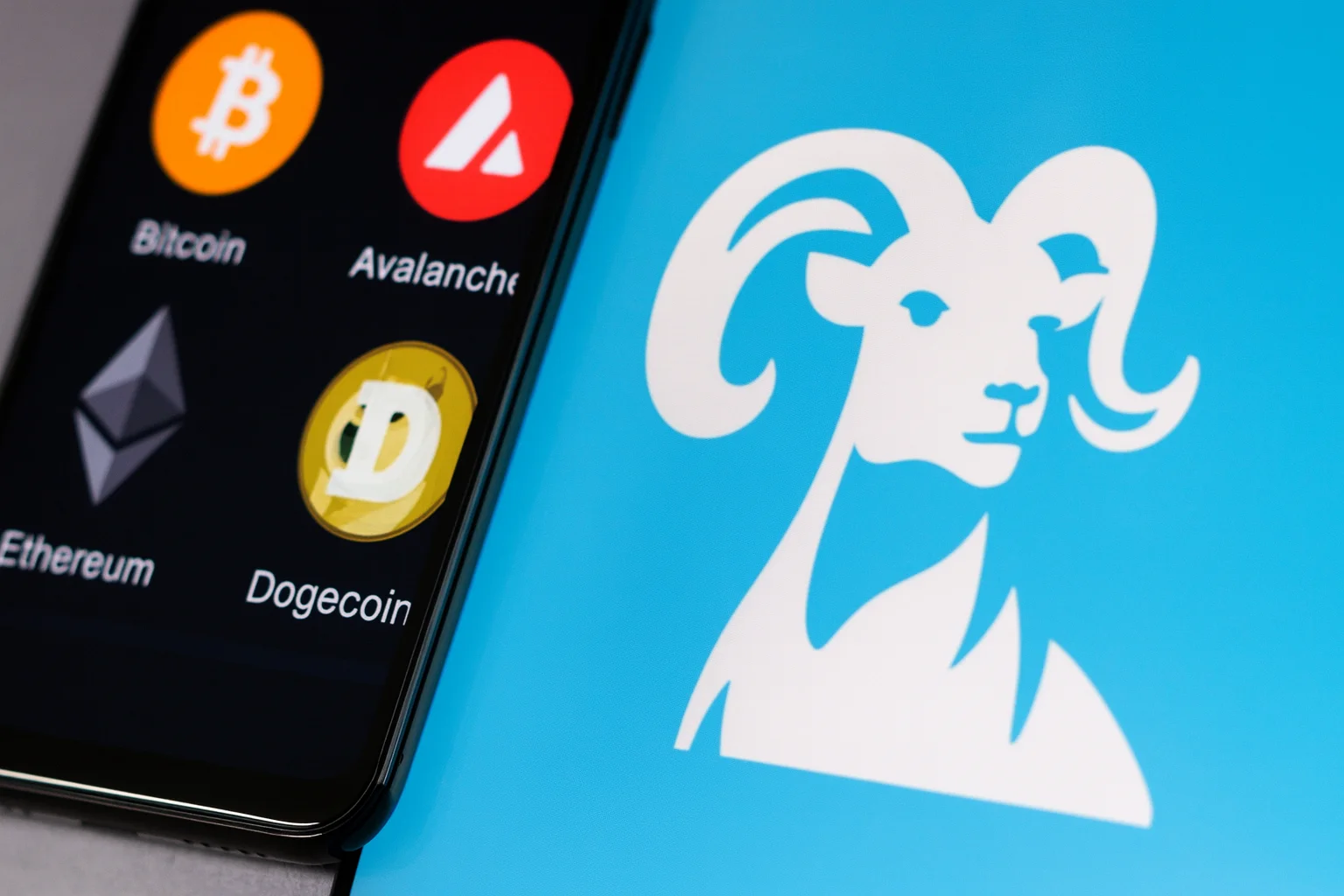
$1 Billion to be Raised for HYPE: SEC Filing
Hyperliquid Strategies has taken a notable step into the cryptocurrency market. With its S-1 filing with the US Securities and Exchange Commission (SEC), it aims to raise up to $1 billion in capital. This funding will focus on the acquisition of the company's native token, HYPE, and expanding its institutional crypto assets.HYPE has been filed with the SECHyperliquid Strategies is the result of the ongoing merger between biotechnology company Sonnet BioTherapeutics and special purpose acquisition company (SPAC) RorschachILLC. Upon completion, the company will be led by former Barclays CEO Bob Diamond as Chairman, and David Schamis as CEO. The filing also states that the company holds 12.6 million HYPE tokens and approximately $305 million in cash reserves. According to the document filed with the SEC, the company plans to conduct this capital raising process by issuing 160 million shares. It also emphasizes that the funds will be allocated not only for general corporate expenses but also for systematically purchasing HYPE tokens. The filing clearly states a plan to generate yield by staking the tokens extensively.This development was a positive catalyst for the HYPE token. Following the announcement, the token gained approximately 10% in value. However, the overall crypto market is experiencing a stagnation and correction trend. In this context, the company's capital raising move can be perceived as a sign of confidence among investors.Why are "Hyperliquid Strategies" important?This development is critical. The company is bringing the capital raising process and share issuance methods commonly used in the traditional finance world to the decentralized finance (DeFi) space. It's rumored that this strategy, which focuses specifically on the HYPE token, could cause temporary fluctuations in the token supply, as it also means a decrease in the circulating amount of staked assets. Therefore, it is expected to have a certain impact on price stability.Furthermore, the Hyperliquid ecosystem is quite strong in terms of volume. The platform holds a significant share of perpetual futures contracts. According to market data, decentralized futures trading volume approached $1 trillion in the first 23 days of October.While such corporate moves are perceived positively, there are some important points to consider. First, raising capital through share issuance could pose a risk of dilution for existing shareholders. Furthermore, volatility in the altcoin markets and macroeconomic uncertainties remain significant risks. The company's token accumulation strategy requires a long-term perspective. Therefore, fluctuations are expected in the short term.HYPE price on the riseFollowing these developments, the HYPE price rebounded strongly in the last 24 hours, rising 11.47 percent to $38.57. The intraday trading range was between $34.63 and $39.06. On the weekly chart, the token continues its gradual upward trend with a 2.3% increase. However, it appears to have lost over 20% of its value in the last 30 days.
